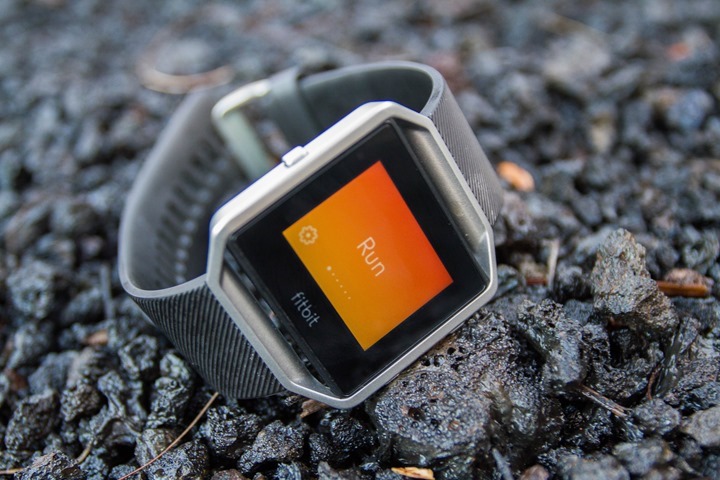The Power Meters Buyer’s Guide–2016 Edition
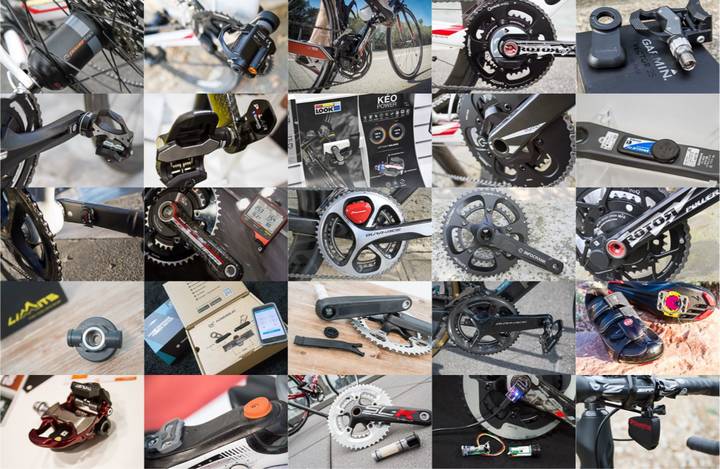
Once again, it’s time for the annual power meter buyer’s guide. While the last month hasn’t seen a ton of new power meters, if you take the entire year in review, you’ll see it’s been quite busy with not only new players – but also totally new methods of buying a power meter…such as subscription based power meters.
Of course, we saw a spring price war breakout, with power meter prices plummeting. I wrote about that here, and will update it shortly to show where things stand at the end of the year.
When we look at what’s new this year, there’s been a number of new products on the docket:
– 4iiii Dual Power Meter
– Team Zwatt Subscription based power meter
– ROTOR’s 2INPower system
– Look’s new dual ANT+/BLE units shipping
– Shimano’s new power meter
– Pioneer’s expansion of crank arm types
– Quarq’s new DZero power meters
– Power2Max’s new NG power meters
– Heck, even running power meters (which I’m excluding in this post)
At the same time, there’s also products that have been in our minds for potentially years (or less) that still aren’t shipping.
The goal of this post is NOT to give you a final answer that says ‘this is the power meter to buy’. If there’s anything I want to change in the industry it’s the mindset that there is a single perfect power meter for every consumer. Thus, if you ask someone for “the best power meter”, and they give you any answer other than “it depends”, don’t trust that person. That person should be asking you your specific use case, bike placement limitations, and how much you want to spend.
The cycling market has many unique use cases and thus you’ll need to take into consideration your specific requirements. For example, it’d be silly to go out and buy Garmin Vector if you’re looking to put it on a mountain bike. And similarly, it’d be silly to buy a PowerTap hub if you currently have HED H3 wheels, since it wouldn’t fit there.
Note that I’m not going to cover why you’d use a power meter here, nor how to use it. For those, start here with these posts. Instead, I’m just going to focus on the products out in the market today, and those coming down the road.
Finally, remember that power meters tend to be about as fiery as politics and religion. So keep in mind this is just my view. There are certainly other views out there (all wrong of course), but this comes from my perspective of trying out all the products below and hearing feedback from literally hundreds of people per day. There are no doubt edge cases I can’t easily cover in a single readable post, but I think I’ll cover 99% of the people out there. The remaining 1% can consider a donation of gold and/or expensive rocks for my further thoughts.
With that, let’s dive into things.
Power Meter Placement:
Before we start diving into the brands, features and functionality, we should probably talk about placement. The reason being that unlike a bike computer that works on just about every bike on the planet, power meters actually have more limitations than you might think. Some limitations are straight technical (i.e. it won’t fit), and some are preference based (i.e. I don’t like it). In either case, for most people this section will help narrow down the selection a bit.
Let’s just briefly ensure we’ve got everyone on the same page as far as where these things all go, starting with the below photo and using the text after it as a guide.

As you can see above, we’ve got five main areas we see power meters placed today:
1) Rear wheel
2) Crank spider
3) Crank arms
4) Pedals/Cleats
5) Bottom Bracket/Axle (not visible, behind tip of arrow)
There are tangential products on other areas of the bike (like handlebars), but none of those currently on the market actually have strain gauges in them. Thus they are more estimations (albeit some highly accurate) than actual force measurement devices. So for much of this post I’m keeping the focus on what’s known as “direct force power meters” – which are units that measure force via a strain gauge of some sort. And finally, I’m not going to talk about companies that have gone out of business (i.e. Ergomo), or products that haven’t been made in a long while (i.e. Polar chain power meter). Not that I’d recommend either anyway at this point.
Back to my photo-diagram, I want to expand out the crank area a bit and talk specifically to that. Here’s a quick cheat-sheet of which products are where (I’ve added a single-line item for non-direct force options):
Rear Wheel: PowerTap hubs
Crank Spider: Quarq/SRAM, Power2Max, SRM, PowerTap C1, Team Zwatt Zpider
Crank Arms: Rotor, Stages, Pioneer, 4iiii, WatTeam, ROTOR INPower2, Team Zwatt Zimanox, Shimano
Pedals: Garmin Vector, PowerTap P1, Polar/Look combo, bePRO, Look, Xpedo
Pedal Spacer: LIMITS
Cleats: Brim Brothers
Bottom Bracket: Ashton Instruments, Dyno Velo, ROTOR INpower, Team Zwatt Zpindle
Non-direct Force Power Meters: PowerPod, LEO, iBike
In the case of left-only variants of some of those products (Polar/ROTOR/Garmin/PowerTap/4iiii), it’s still the same placement, just on the left side instead of both sides.
Also note, for companies where they OEM a secondary product, I’m just focusing on the primary name-brand product. For example, Cateye is simply 4iiii, and FSA is simply Power2Max re-branded.
Features & Functionality:

Now that we’ve covered where each unit goes, let’s talk about the features that the power meters on the market have today:
Total Power (Watts): This is the obvious one – every power meter has this today (even estimated ones!). This is simply measuring and transmitting your total power output to a head unit of some type.
ANT+ Support: Another relatively obvious one, the vast majority of power meters on the market today transmit via ANT+ to compatible had units. This allows you to use one of dozens of different head units out there. I’d be very hesitant to choose a non-ANT+ power meter unless you already know which head unit you’re going to pair to it (for example, the Polar V800 or Ambit3).
Bluetooth Smart: Bluetooth Smart (or BLE/BTLE for short) has become a bit of a secondary standard in the power meter market. The majority of new power meters being made are shipping with dual ANT+/BLE. However, I’d warn that the head unit support for Bluetooth Smart power meters remains a mess with different units working on different head units, even varying by firmware versions. Thus by and large even companies that support dual ANT+/BLE power meters on their head units (like the Wahoo ELEMNT), are recommending folks use ANT+ when connecting from the ELEMNT to power meters, as it tends to work better. In time that’ll resolve itself, but the industry is still growing there.
Left Only Power Meters: These power meters only measure power from the left side. All of these units then simply double the left power and produce total power. Stages really exploded this category with their left-only power meter, and other vendors followed suit including Garmin (Vector S), Rotor (Rotor LT, ROTOR inPOWER), 4iiii (some models), LIMITS, and Polar (Keo Power Essential). Note that all bottom-bracket power meters are left-only power. There are likely more I haven’t listed here.
Estimated Left/Right Power: This became all the rage just prior to true left/right units coming out, starting with the SRAM/Quarq RED unit offering left/right power. That platform works by essentially splitting your crank in half and assuming that any power recorded while pulling up is actually coming from the left side, whereas pushing down is from the right side. Thus, an estimation. It’s good, but not perfect. Note that even with true left/right power (below), there’s actually very little in the scientific community around what to do with the data. While you may think that perfect balance would be ideal – that hasn’t been established. And some that have looked into it have found that trying to achieve balance actually lowers your overall output. The only thing folks agree on is that measuring left/right power can be useful for those recovering from single-leg injury. The PowerTap C1, Power2Max units, and all SRAM/Quarq models currently on the market use this method.
Actual or True Left/Right Power: This is limited to units that can measure your power in more than one location. Thus why we see it on pedals, as well as the more expensive crank-arm or pedal based power meters. You can’t measure it directly at the spider, instead you have to measure it upstream of that such as the cranks (ROTOR dual system, Infocrank’s dual system, Pioneer’s dual system, WatTeam, Shimano’s dual system, 4iiii’s dual system), pedals (Garmin, bePRO, Polar/Look, Look alone, Xpedo), or cleats (Brim Brothers).
Pedal Smoothness & Torque Efficiency: These two metrics are available in the high-end power meters which contain true left/right power measurement as well as a supported head unit.
Cycling Dynamics: This is Garmin’s suite of Garmin Vector specific features that enable data such as platform offset and where in the stroke your power is coming from (power phase), as well as seated and standing position. Polar also has a variant of this in some of their new cycling units as well with their own pedals. But other manufactures can’t display these metrics on Garmin’s head units. So basically, it’s just Garmin to Garmin. But honestly, I don’t find much true value in this, beyond some limited bike fit scenarios.
Battery Swapping: All but one unit on the market today (SRM) supports battery swapping by yourself. SRM requires you to send it in (but gets way longer battery life in between swaps). The remainder of the shipping units out there today utilize a CR2032 and similar coin-cell batteries. Most get between 200 and 400 hours of run-time before you simply replace the battery. However, some of the newer units like the PowerTap P1 that runs on AAA batteries get a bit less time, as do units such as bePRO and WatTeam that use rechargeable batteries (using micro-USB cables). Also, Power2Max did just announce their rechargeable system in the NG models, but it hasn’t started shipping yet (slated for November 2016).
Calibration options: All units on the market today support some sort of calibration function, though to what extent is what differs. Some have numerous options (i.e. Quarq with an app allowing you much further access), while others are more black-box (i.e. Stages and Polar). For the most part, your primary concern here is really that some sort of calibration occurs, and that you can trigger it to happen on demand. Beyond that it tends to get to more advanced calibration and torque checking methods. It should be noted that the term calibration can have very specific meanings to different people (technically most people are really doing a zero-offset). But for today’s post I’m going to keep it a bit more generic.
Ok, with all the core power meter features covered, let’s dive into the brands available today.
The On-Market Contenders:
We’ll start with products that you can effectively take home today. They’re in the market, available today for purchase and you can more or less install them today on the bike. They may have slight backorders if you were to order today, but units are shipping to consumers (which is where I draw the line). For the purposes of this section I’m focusing on direct force power meters (DFPM’s), in a later section I’ll cover non-DFPM’s.
Additionally, in the following section after this I’ll cover announced but not yet shipping units that are on the road to market.
Note, this list is arranged in no particular order, you can use the sidebar shortcuts to quickly skip to different products. Also note that I’ve updated sections as appropriate for this year, but for products that haven’t changed, I’m not going to re-invent the text just to re-invent that text. I’d rather spend that time eating cookies and ice cream.
PowerTap Hub:
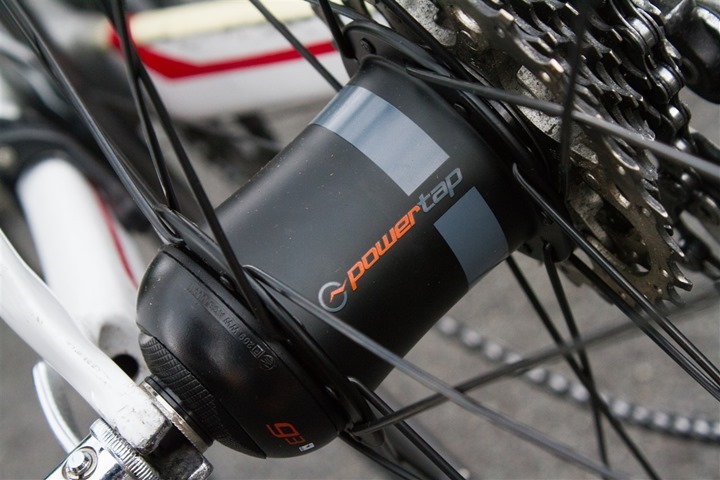
PowerTap has been around more than 15 years – longer than most folks realize actually. Though their popularity has really grown in the past few years, especially in the US. The PowerTap replaces your rear wheel hub, which means that it’s tied into a single wheel. This makes it easy to move between bikes, but also makes it difficult if you have separate training and racing wheels – ultimately costing one of those two situations to lose out on power.
These days the PowerTap hub products ship with a dual capable ANT+/BLE cap. But if you find an older G3 unit that has an ANT+ cap on it, you can buy the dual caps or the BLE-only cap. Thus it’s pretty flexible that way. I use the dual caps on my units without issue across a wide number of devices.
Advantages: Easy install if you buy a wheel set with it pre-installed (my recommendation). Auto-zero while coasting helps keep things in check without you thinking about it. Manual calibration is easy, and swapping out batteries and the electronics pod quick and straight forward. Good customer service.
Disadvantages: Limited to a single wheel, so training vs racing scenarios can be tough. Also limited on things like disc wheels. And if you have multiple bike types where the wheel type changes (i.e. going from triathlon to cross), you may be in the same pickle there.
Would I buy it: Absolutely, and in fact, it’s one of the units that I’ve bought myself as a workhorse in my power meter testing (two units actually). Based on what I’ve seen, the PowerTap is the closest I get to ‘set it and forget it’ when it comes to power meters on the market today (talking specifically to calibration/offset variance and stability). However, if you’re one that changes wheel sets frequently in your training, I’d be more measured in deciding whether it’s worth not having power somewhere (I don’t think it is). Though, with their recent price cuts, it makes buying two PowerTap’s basically as cheap as buying a single crank-based unit.
Relevant Posts: CycleOps Joule and PowerTap Wheelset In-Depth Review, PowerTap’s new hubs, Bluetooth Smart Trainers, iPad apps, and more, A sneak peek at two new PowerTap products (including high speed data cap) – Note that I don’t really have a super-new In-Depth Review of the PowerTap G3, for no particular purpose, though you’ll find data from it in virtually every one of my power meter reviews.
(Note: CycleOps has renamed its power meter organization to simply be “PowerTap”, and prefers that the company thus be called “PowerTap”. Thus, I’m using that naming.)
PowerTap Pedals:
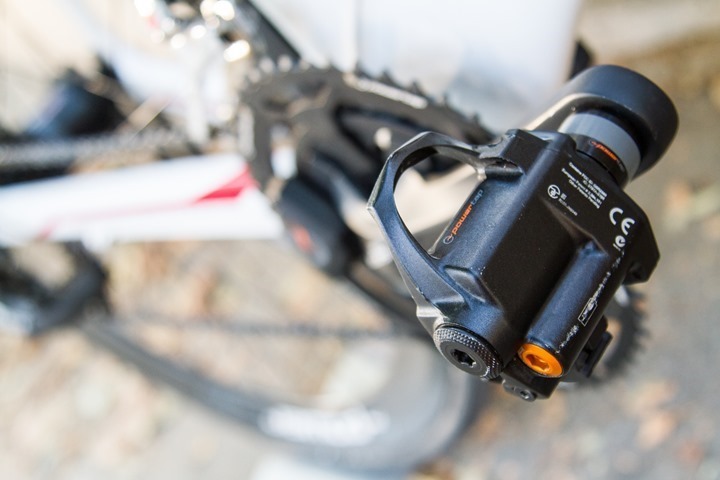
Since we’re on PowerTap products already, we’ll continue that trend with the P1 pedals. I’m separating out these three products because they’re so different (different placement, etc…). Versus if a product is simply a slight model change by the same company (i.e. Quarq Riken to Elsa), I’m lumping them together with differences noted in that section.
As for the P1 pedals, they were announced in the spring of 2015 and started shipping in the summer of 2015. Since then they’ve been adopted by many people, primarily due to their simplicity and ease of use. They don’t record advanced metrics yet like Garmin’s Cycling Dynamics (though they did just roll out an app store update this week that allows you to see them during indoor trainer sessions), but they do have total power, left/right power, cadence, and other core metrics. Additionally, they also have dual ANT+ & Bluetooth Smart transmission, which Vector lacks.
Advantages: Easiest install of really any power meter out there (except perhaps the PT hub if it’s already in a wheel), no pods or torque wrenches required. Just a simple hex wrench to install and off you go, no settling period required either. Pricing is competitive with other full left/right units currently shipping. I view the AAA battery as an advantage, though a small group of folks sees it as a disadvantage (I love that I can get a replacement anywhere in the world at any tiny little store on a route if need be). Finally, no pods are on the units – so nothing to worry about breaking easily.
Disadvantages: Only a Look-Keo pedal/cleat type, and at that it’s not exactly a Look-Keo pedal (slight differences). Also the battery life is more limited than some other power meters. Finally, there’s been a handful of folks that have seen issues with play in the spindle. PowerTap says that they addressed some early manufacturing issues there, but there still seems to be the occasional issue pop-up with a handful of readers. Note that any earlier reviews seen on the interwebs with power spikes have long seen been resolved in a firmware update last winter.
Would I buy it: Yes. This is my go-to power meter in terms of being able to travel and bring it with me. I type this from 35,000 feet over the Atlantic, and I was able to use these P1 pedals in both Canada and the US during my trip. Quick to put on. If I had to have only one power meter (ignoring all the usual constraints), this would be it.
Relevant Posts: PowerTap P1 Power Meter Pedals In-Depth Review, First rides with the PowerTap P1 Pedals & PowerTap C1 Chainring…and more, PowerTap announces P1 Power Meter Pedals, also PowerTap C1 chainring unit
PowerTap Chainring:
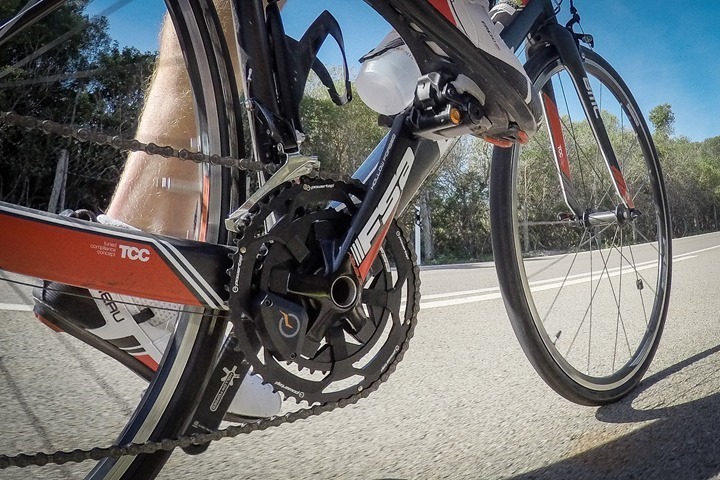
At the same time that PowerTap introduced their new P1 pedals in the spring of 2015, they also announced a new line – the C1 chainring power meter. This unit ships with the chainrings, per the pod you can see attached to the chainrings above. The company started shipping the product last fall of 2015.
I used the unit quite a bit last fall and into the winter without any issue. It’s essentially very similar to that of the Power2Max and Quarq units. The only major differences you’ll note are really more around compatibility with various crank sets.
Advantages: Dual ANT+ & Bluetooth Smart compatibility, ability to install onto your own compatible crank arms, price, and long battery life.
Disadvantages: Limited chainring compatibility is really the main one, being that the company is only offering certain compatibility options. For many people this won’t be an issue – but it’s worth noting. Like most of the other crank-spider region options (Power2Max/Quarq/etc…), it’s not hard if you know what you’re doing – but might be slightly intimidating to those not as familiar to figure out which model is compatible with your bike. Fear not, it’s easy for your bike shop though.
Would I buy it: Yes, I have no issues buying this unit. It’s been proven reliable and accurate, and after nearly a year of being on the market, I hear virtually no complaints. I kinda put the PowerTap C1, Power2Max and Quarq units all in the same boat: All are great options and all are fairly similar in features (and roughly in the same price range) – simply go with whatever fits your requirements around compatibility best.
Relevant Posts: Powertap C1 Chainring In-Depth Review, First rides with the PowerTap P1 Pedals & PowerTap C1 Chainring…and more, PowerTap announces P1 Power Meter Pedals, also PowerTap C1 chainring unit
Power2Max:
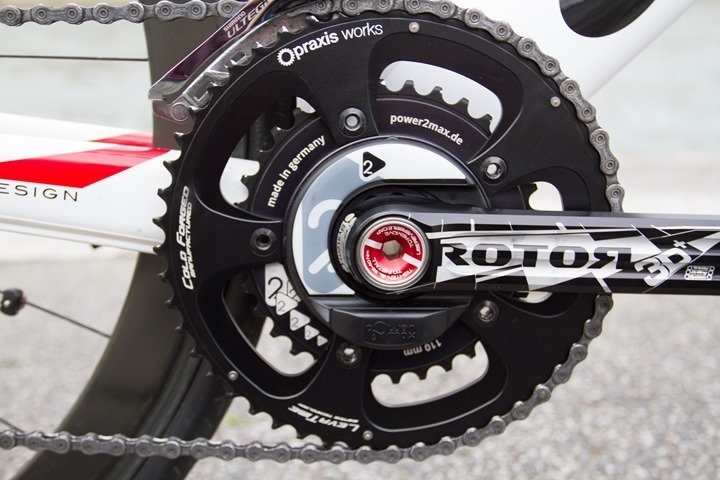
Power2Max has been on the scene for roughly a little over 4 years now. Since then they’ve repeatedly driven down the costs of power meters in the industry, and gained significant market share in doing so.
The units are typically sold with or without cranks, so you’ll need to add your own, or purchase them from Power2Max pre-installed. Exactly one month ago today they introduced their new Power2Max NG power meter lineup, which succeeds their Power2Max Type-S lineup. The new NG units bring with them dual ANT+/BLE (the Type-S is ANT+ only), as well as a rechargeable battery. It also brings a bit of a steep increase in price.
When I use the Power2Max (like Quarq and PowerTap), I find them among the least finicky and most ‘easy to use’. Day in and day out in testing these units tend to ‘just work’ for me with very little calibration worries.
Advantages: The least expensive crank-based solution on the market today. Solid accuracy with a growing crank set compatibility matrix. Any temperature compensation concerns are long-gone relics of devices years ago.
Disadvantages: There isn’t a method to turn off auto-zero today on units (which is really only an issue for the most advanced of advanced users).
Would I buy it: No problem at all here, as noted above – it’s probably the best deal for a complete (captures all power, not just left) power meter on the market today. I love that they’re well into the ‘just works’ category. Note that at present I have *NOT* tested the new/upcoming NG units, so, I’ll have to defer judgment there until they ship. I have tested both the Type-S and Classic lineup without any issues.
Relevant Posts: A look at the new Power2Max NG power meters, The Power2Max Type S Power Meter In-Depth Review, Power2Max drops prices…again. Now $610US, Power2Max releases new Type S line, expands compatibility, Power2Max introduces Type S mountain bike power meter, additional road bike models
Garmin Vector:
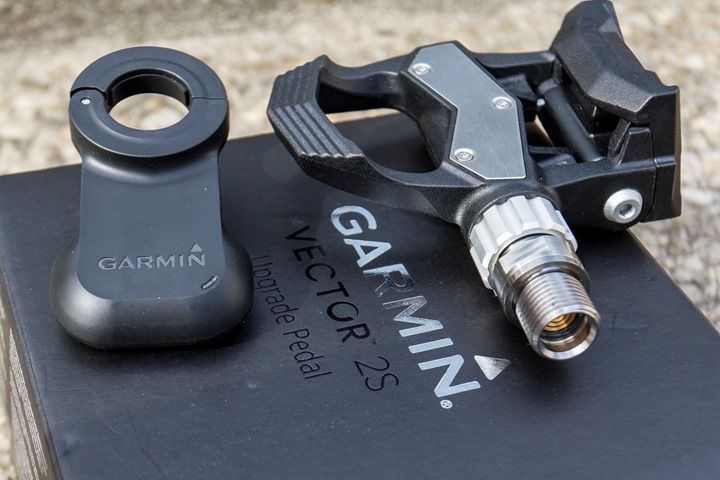
It’s funny to think that Garmin Vector has been out for over three years now – well into the ‘mature’ product category from a power meter standpoint. In that time they’ve released a new v2 version, added in Cycling Dynamics (to both v1 & v2) and even started including the fabled crowfoot adapter for installation (which still requires a torque wrench, even on Vector 2). Finally, they introduced a Vector S option, which is a left-only unit that can be upgraded down the road to a complete dual-leg system.
They’ve largely stabilized any outstanding issues for most users that cropped up in the first edition, though I think many bike shops remain leery mostly on historical grounds.
Garmin is the only company that offers Cycling Dynamics, which includes all assortment of metrics on your pedaling style. Some of these metrics can be interesting from a bike-fit standpoint, but many don’t yet have a specific training or racing purpose. Sometimes these metrics take time for the greater scientific community to figure out how to use. Unfortunately, Garmin believes that either the system or these metrics warrant a price far higher than it should be. I disagree, and it’s been 2 years since Cycling Dynamics has been out and nobody has come up with any real uses for it beyond a fit studio.
Advantages: Cycling Dynamics, full left/right power recording, somewhat-portable system between bikes (can be a bit finicky to install though)
Disadvantages: Pedal choice (just Look-compatible, albeit with a Shimano Ultegra upgrade/accessory kit available), price, and portability isn’t quite what it seems if you travel (you’ll need a torque wrench to really install properly, yes, even with Vector 2), but within your house it’s really straightforward.
Would I buy it: No, not at this point or price point. This is for three specific reasons: 1) They require a torque wrench to install, the PowerTap P1’s don’t. 2) They are ANT+ only, and not dual ANT+/BLE, thus limiting your app and head unit usage. 3) They’ve got pods hanging down that the P1’s don’t have. 3.5) Garmin has yet to clearly define how to use Cycling Dynamics to get faster in training or racing, despite 2+ years of folks asking for it.
Relevant Posts: Garmin announces Vector2 (and 2S), also upgrade kit for original Vector owners, Garmin Vector In-Depth Review , Garmin announces Vector S: $899 power meter, also announces Cycling Dynamics,
Favero bePRO:
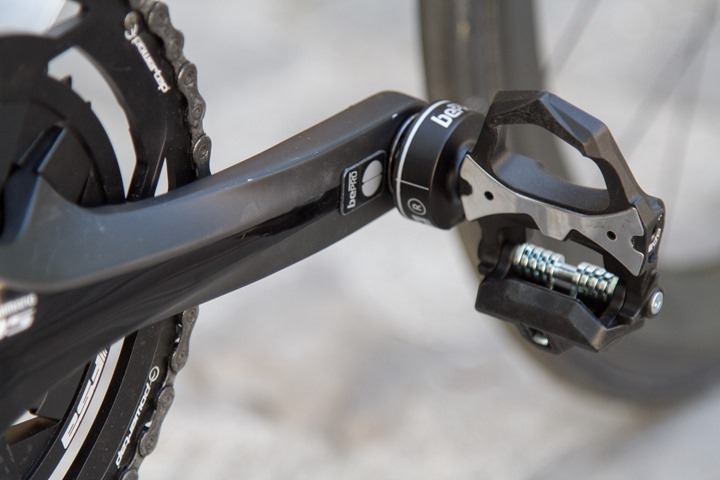
It’s rare that a company both announces and ships a power meter at essentially the same time – but Favero did just that last summer. They announced their first power meter, the bePRO and started shipping basically immediately. The unit is similar to Garmin Vector in that it’s a pedal based power meter, but it’s a bit different in that it doesn’t require separate pods be installed – rather it’s all part of a single pedal with directly attached pod design. This gives you full left/right metrics.
While the installation may appear intimidating the first time, you’ll quickly realize it’s pretty easy to do. In my testing I found the accuracy was quite good after a few rides to let it settle, and from that point forward it handled fairly well. The battery life isn’t quite as strong as some of the coin cell powered units, but isn’t too hard to charge in that it uses a simple micro-USB cable.
Advantages: Price – the unit is 749EUR for a dual-leg system or 499EUR for a single-leg system. Accuracy is overall quite good as well.
Disadvantages: Installation can be kinda finicky at first, and you do need to take their special tools with you if you travel. Also, I’m concerned about wear and tear on the units over a longer period of time.
Would I buy it: Mostly. Last year I was concerned about how it might hold up long term with the pod design, but after a winter’s worth of DCR readers testing it – the feedback has been overwhelmingly positive. No issues on the durability front. I would caution that I wouldn’t buy this unit if you’re moving back and forth between bikes, it’s just not designed for that. The other downside is that it doesn’t support BLE, so it’s ANT+ only.
Relevant Posts: The Favero bePRO Power Meter In-Depth Review
Polar/Look:
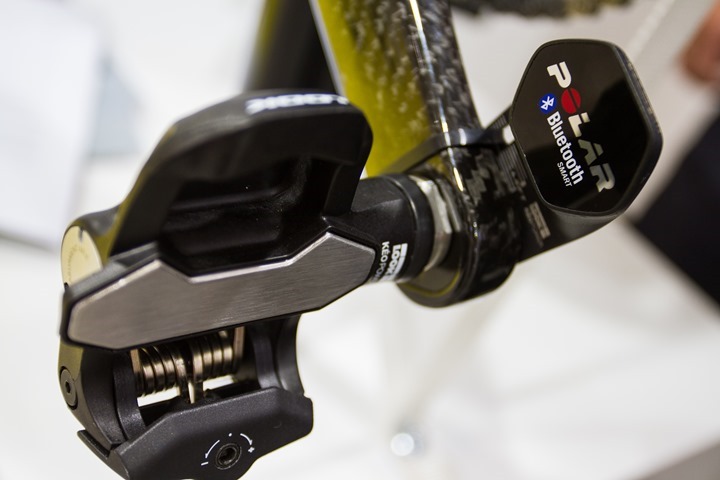
(This section talks specifically to the Polar-branded Look/Polar combo, see next section for Look-branded option)
The Polar/Look Power System pedals is almost five years old at this point, though it’s had a few overhauls along the way – most notably now being full Bluetooth Smart compatible, though that basically means that today it’s really only compatible with the Polar V650, M400, and V800 units. I don’t know if the Suunto Ambit3 is compatible with it (as it does support BLE power meters).
Note that there’s been a bit of a relationship status change been Polar and Look, so things are in a wonky state right now. Look announced their own dual ANT+/BLE version last year, and started shipping this past winter/spring, effectively sideswiping the Polar product lineup.
Finally, Polar announced a new version two summers ago, Keo Power Essential, which is a left-only option. In this scenario you just get the left pod and pedal, and then it doubles the power for the right side. This has the same inherent limitations as Stages, but also offers a lower price point than the full Keo dual-pedal system.
Advantages: Pedal based means theoretical portability, system largely ‘just works’ once you get it installed. Appears accurate, but really hard to validate all aspects.
Disadvantages: Installation is a bit complex. Not as easy as Vector to move between bikes. Limitations on crank widths/lengths. Only Bluetooth Smart support (not dual ANT+/BLE). Overpriced.
Would I buy it: Definitely not. Aside from being functionally rather limited compared to other power meters, it’s horribly overpriced. As noted in a recent post elsewhere, the price would really have to be solidly sub-$1000 to consider, and even then really only if you were an existing Polar head unit owner (V650/M400/V800). Plus, I don’t even think Polar is selling these at this point anymore. After Look ditched them and made their own dual ANT+/BLE power meter (also overpriced), they’re kinda left at the alter holding limp flowers.
Relevant Review: LOOK’s new dual ANT+/BLE Power Meter Pedals: A bit more information, Polar Look Keo Power System–Pedal Based Power Meter–In-Depth Review, Polar announces new Keo Power systems, and V800/V650 power meter update plans, and more!
Look:
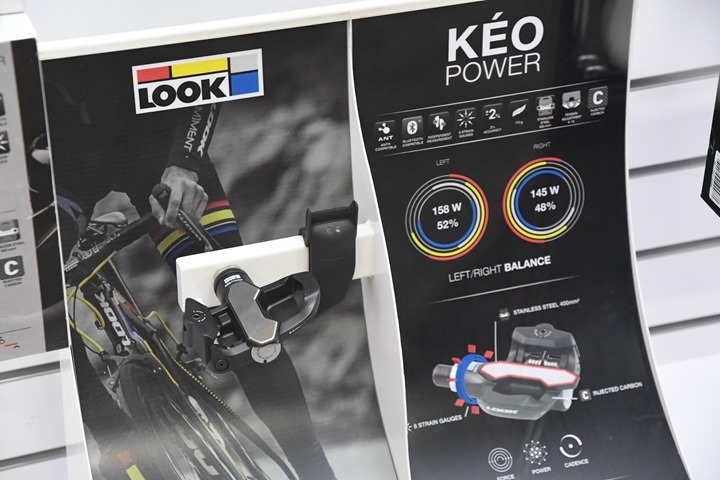
(This section talks specifically to the Look-branded option)
As noted in the previous section, Look spun off their own product from the previous Polar partnerships late last year and started shipping earlier this year. That product upgraded the pods used, as well as added dual ANT+/Bluetooth Smart solution. In other words, it became a viable option within the power meter world.
Now this is one of the few units that I haven’t tested the final dual ANT+/BLE version that Look themselves are producing. On one hand they produced the Polar product previously and from an accuracy standpoint that came out seemingly fine. On the flip-side, the product did see some delays – so I’m hoping the didn’t shortcut anywhere.
Advantages: Pedal based means theoretical portability, dual ANT+/BLE allows multiple head units.
Disadvantages: Only one pedal type, limitations on crank arms/types. Incredibly overpriced.
Would I buy it: No. It’s overpriced. Simple as that. At $1,500 for the dual set, that’s far more than the PowerTap P1’s which do exactly the same thing and don’t require funky installation or have pods hanging off the sides.
Relevant Review: LOOK’s new dual ANT+/BLE Power Meter Pedals: A bit more information
Quarq (SRAM):
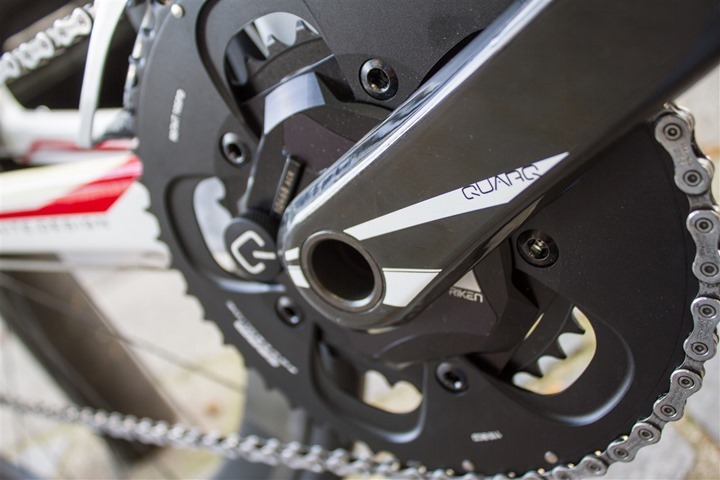
Quarq became the first non-SRM crank-based power meter that was actually affordable. Starting off on straight road bikes they’ve expanded to other areas including track and cross bikes. The unit replaces your existing crank spider and depending on the model is typically sold with specific crank arms attached. You’ll need to ensure your bottom bracket is compatible, but if you shoot the Quarq folks an e-mail I’ve found they can usually help anyone figure that out easily. All Quarq power meters are made in South Dakota (US), along with servicing and shipping from there.
The Quarq Cinqo was actually the first power meter I bought, and what The Girl subsequently purchased as well for her training. Both I and The Girl still have units on our bikes, and I still use them in testing.
At Eurobike this year, Quarq introduced their new DZero lineup of units, which further dropped prices as well as simplified their product line. I got a chance to use one recently during a single ride, but haven’t had the chance to do any detailed testing. My understanding is a unit is on the way to me any day now for a more in-depth review. So the perspectives below are focused on their pre-DZero lineups (the DZero’s just started shipping in the past week or so).
Advantages: Crank-based design means no wheel swap issues. Accuracy on-par with other units. Can swap chain rings without issue. Easy replacement of battery, and can utilize phone apps for further calibration. For me, it has a high ‘just works’ factor. Also, last year’s major firmware update removes need for a magnet on your bike.
Disadvantages: Crank arm selection has diminished some with SRAM acquisition (reducing compatibility), and while Spring 2015 pricing updates has made things substantially more competitive, they are still on the higher end of the scale between Power2Max, PowerTap C1, and themselves.
Would I buy it: From the standpoint of “Have I bought it?”, the answer is obviously yes (Cinqo twice, Riken upgrade from Cinqo). From the technical standpoint, I have no issues with either the RIKEN or ELSA units, which I’ve done quite a bit of testing on. All of those units perform as expected technically. And obviously, customer service-wise they’re awesome. But I haven’t tested out their DZero lineup yet in-depth. If I were to pick 2-3 companies to ‘trust’ not to screw up a new power meter lineup, Quarq would definitely be on that list. But again, I can’t say for certain yet.
Relevant Reviews: First Ride: Quarq’s New DZero Power Meter Series, Quarq introduces new $799 RIKEN AL power meter, Quarq/SRAM RED Review, Quarq RIKEN In-Depth Review, Eurobike 2014 Power Meter Roundup: Quarq News
Stages Power:
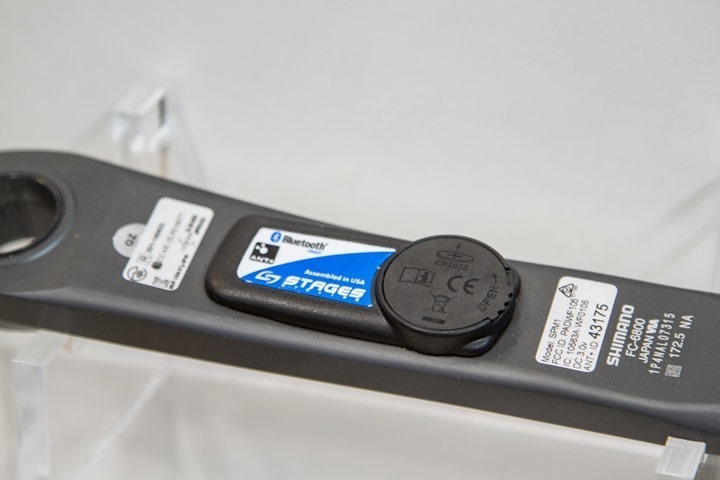
As many know by now, Stages really started the whole left-only trend, in that it’s attached to your left crank-arm (seen above), and thus is only measuring the left leg power. It simply doubles the left-leg power to get total power. This means if you vary, or vary in certain conditions then the power might not be accurate – or something that you could compare to years from now on different products. They were also the first one to do dual ANT+ and Bluetooth Smart dual broadcasting.
They introduced a number of expanded models over the past winter and spring, though did have to put the brakes on other models (such as their planned Campy units). Further, we haven’t seen them expand into selling the dual-versions that Team Sky uses. And I think at this point we’re going to see them focus on their new Stages Dash head unit for a while.
Still while $529USD is a good price, at the same time you do have to consider options for either slightly less (Power2Max) or slightly more (PowerTap/Quarq) that accurately capture your total power.
Advantages: Inexpensive option. Easily moved from bike to bike with a simple Allen/hex wrench. Contains both Bluetooth Smart and ANT+ (and dual-broadcasts). Their new Gen2 design seems to resolve most people’s waterproofing concerns that caused earlier deaths. Also, their firmware update this past spring seems to have resolved many triathlete’s issues with head units not picking up signal while in the aero position (far less common on road bikes).
Disadvantages: Left-only approach means simply doubling left-leg power, may not be fully accurate representation of your power (high or lower).
Would I buy it: This is a much more complex question. Technically speaking it’s a well-made unit that accurately measures the left side. From a pricing standpoint it’s tough to recommend the left-only approach with other options in the same price ballpark that fully capture all power. Further, as I’ve collected a tremendous amount of power meter data over the past year with 3-5 power meters concurrently, I’ve started to understand my specific personal left/right balance biases. For most of my riding, there’d be no major issue with Stages. However for longer or higher intensity rides where I might fatigue more, I see some inaccuracies on Stages due to my personal leg differences. You might be the same, or you might be perfectly even. I don’t know.
I know it’s easy to point at Team Sky and simply say “It’s good enough for Froome”, but the reality is we’re talking about sponsored athletes and teams. In the case of Team Sky, for some riders that are/were seeing imbalance issues with Stages compared to SRM they simply have gone with a ‘known percentage offset’ for wattage goals. This is a bit of a throwing the baby out with the bathwater approach though, that numerous folks have proven isn’t terribly accurate. Which isn’t to take away from Team Sky and Stages, more power to them, but rather my point is that it’s not a one-size fits all implementation.
(Yes, this isn’t just relevant to Stages, but all left-only power meters. It’s just that I wrote the text here first, since it’s the first left-only power meter in the list.)
Relevant Review: Stages 2016 Sea Otter News, Stages drops prices, down to $529US, Stages Power announces carbon crank options, talks a bit about dual leg power, Stages Power Meter In-Depth Review Update
4iiii Precision:
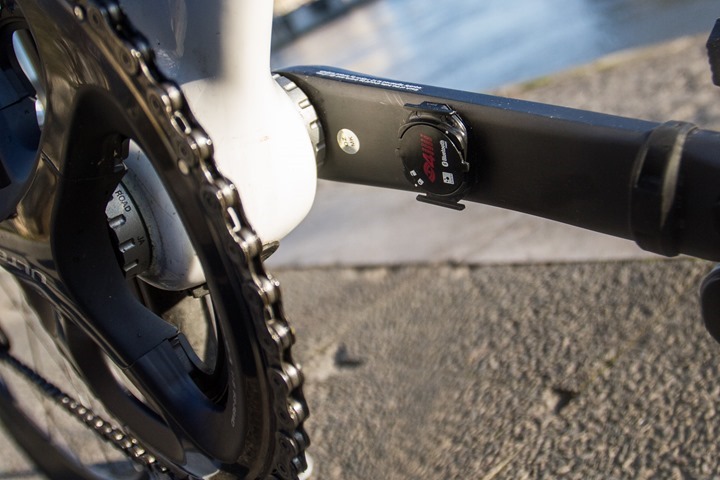
Next we’ve got 4iiii Precision. They announced two years ago at Interbike, and started shipping last spring. While the road was a bit bumpy the first few months, they solved some outstanding issues and have been delivering a very solid left-only unit, and doing so at a $399 price point.
This past spring they announced their dual left/right version, which should have started shipping over the past few weeks, though it might not quite have happened yet. I tried that out last fall on an early prototype. They also announced new crank-arm offerings where you don’t even have to send in your crank arms, you simply pickup one of their units with it pre-installed (and it’s still under $400).
Advantages: Least-expensive power meter on the market today and actually shipping at $399USD. Can be applied to most cranks (non-carbon). Contains both Bluetooth Smart and ANT+ (and dual-broadcasts).
Disadvantages: Left-only approach means simply doubling left-leg power, may not be fully accurate representation of your power (high or lower). Once they release a right-side (dual) companion for it, it’s less of a concern.
Would I buy it: For the left-only side, sure. Take the exact same general left-only comments I made for Stages and apply them here. If the dual left/right version that’s shipping momentarily is as accurate as the left-only version – then that’s a very solid option in the market. I just haven’t tried that yet on a production unit.
Related posts: 4iiii Precision Power Meter In-Depth Review, 4iiii Announces New Factory Pre-Install option, Dual Timelines/Prices, A Brief Update on 4iiii Precision Power Meter: Starts shipping this week, 4iiii’s Introduces $399 Power Meter, Precision: My First Ride With It
SRM:
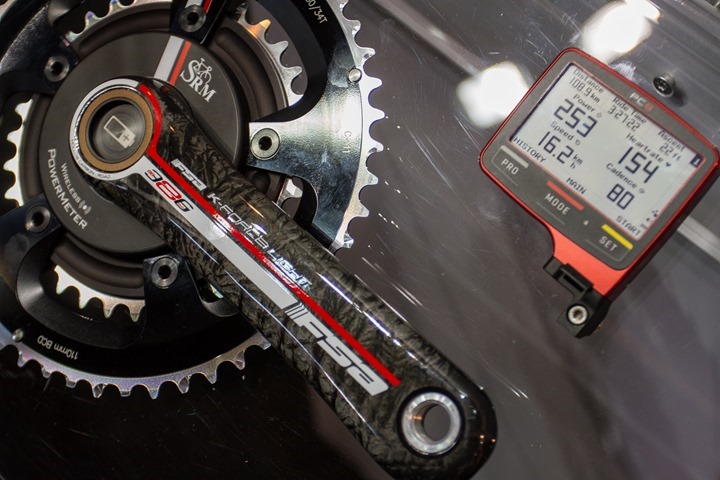
SRM has been around since the beginning of power meter measurement, and I don’t think there’s anyone that would argue that SRM doesn’t produce solid power meters. But don’t let that fool you.
From a power meter standpoint however, they are really just as susceptible as any other power meter on the market to adverse events. Which is probably an important point to note: No power meter out there today is perfect. Not even SRM. They all have conditions where they do really well, and conditions where they do less well. It’s understanding those conditions that’s most important. Which doesn’t take away from SRM, but rather simply serves to note that I believe there’s a bit of an urban legend with them being the ‘gold standard’. Many of the products in this post can produce just as consistently accurate power as SRM (which again, SRM is good at doing).
While SRM and I have talked about doing a product review, I’m not sure there’s a substantial benefit in me doing one on older products. Perhaps if/when they release either a rechargeable unit (which has been backburnered for at least another year), or if/when they release a newer low-cost power meter that’s in the market.
Advantages: It’s a well established brand with a well understood product. The reliability is generally very good. With ANT+ you can use any head unit you’d like, and aren’t limited to just the SRM head units.
Disadvantages: Expensive. Servicing isn’t as open as other power meters on the market today. If looking at their head unit (not required), the current generation is simply really expensive for what you get. No BLE support.
Would I buy it: While I do own one, I certainly wouldn’t recommend someone else buy one. With the exception of very specific technical use-cases that other power meters can’t fulfill (higher speed recording rates with older head units), I feel that for 98% of the market today, there are more budget friendly options that are just as accurate. I don’t subscribe to the “gold-standard” concept, maybe at one historical point, but not in this market. And as the Pro Peloton has proved, virtually every other power meter in this list is just as good as an SRM (if not better).
Relevant Posts: Eurobike 2016 Power Meter Roundup: SRM, Eurobike 2015 Power Meter Roundup: SRM, First look at new SRM PC8 head unit with WiFi/GPS/ANT+ & Bluetooth, Eurobike 2014 Power Meter Roundup: SRM., Interbike 2014 SRM: Their iOS app, PC8, and their thoughts on low-cost power meters
Pioneer Power:
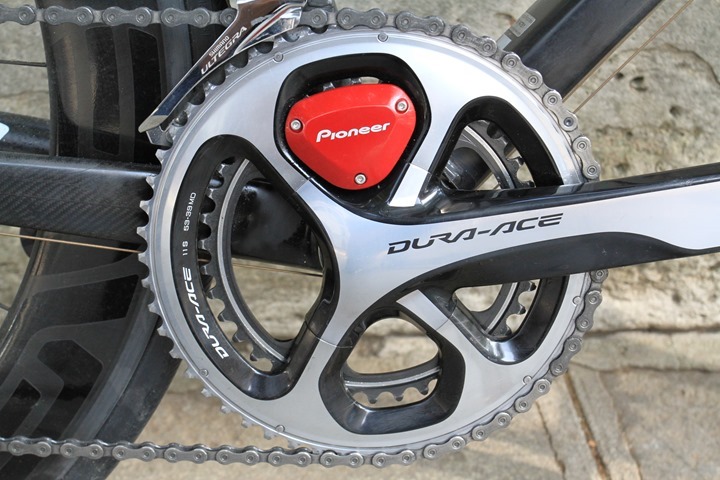
Pioneer has iterated nicely through two generations of power meters over the last three years, roughly paced at one per year. Or in the case of this year, a boatload of new options. In the process they’ve dropped the price significantly – now down to $999USD for a dual system, and $579 for a left-leg system, as well as greatly simplified install and purchasing.
The Pioneer system is a bit different than most other power meters on the market in that you don’t do the install yourself, but rather, you get the kit sent to you fully installed after sending in your crank arms. Additionally, it’s one of the few units on the market with true left/right high speed data (starting at 12 samples per second (at 60RPM); faster the higher the cadence). While the 1st generation units received a bunch of undesirable attention due to zip tie usage, the 2nd generation units removed that requirement. It also removed the complex-crazy installation process by going with a process where you ship them your stuff.
Note that the higher speed data is only available on their Pioneer head units.
Advantages: Has the highest recording rate of any dual-leg power meter on the market today, measures left/right power and associated metrics more in-depth than anyone else. A completely pre-set system once it arrives to you. Any choice of chainrings you’d like on the planet. Plus, the $999 complete system price for dual-leg isn’t too bad.
Disadvantages: For crank arms, you’re somewhat limited to certain crank sets. There can be a small delay when you send away your own cranks to get it installed (versus buying a pre-installed set), though realistically very few power meters are available next-day anyway. Some have seen very minor delays in track-start type situations, but I think that’s very limited in scope.
Would I buy it: No issues at all for the dual system. I’m a bit mixed on the left-leg side. If you don’t plan to buy their head unit or upgrade to a dual left/right system down the road, then honestly there are cheaper (and better) options from Stages and 4iiii that do dual ANT+/BLE.
Relevant Posts: Pioneer announces new power meter options, head unit upgrades, bike sensor modeling, Power meter prices plunge further as Pioneer & SRM join PowerTap in price cuts, The Pioneer Power Meter System In-Depth Review, Interbike 2015 Power Meter Roundup: Pioneer, Eurobike 2015 Power Meter Roundup: Pioneer
Verve Infocrank:
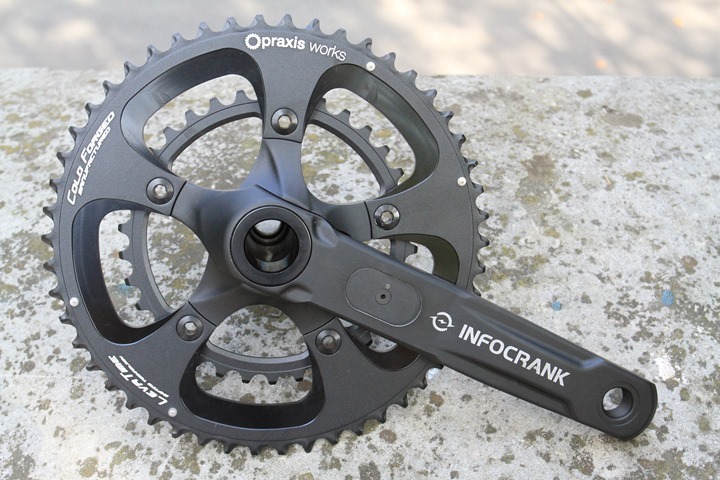
Verve introduced their Infocrank power meter in 2014, and continues to chug along with updates to the platform and hardware options. This dual crank-based power meter has strain gauges on both crank arms. Additionally of note is that the unit has custom designed crank arms that are specific to Infocrank.
The unit transmits on ANT+, and uses small coin cell style batteries that you can go ahead and replace as required (no sending in needed). I’ve been testing a unit for…well, an exceedingly long period of time. To date I’ve seen absolutely zero accuracy issues with it – and can validate their claim that you don’t ever need to worry about pressing the ‘calibrate’ function on your head unit. Of course, at the same time, most other power meters are fairly accurate as well – but Infocrank seems to be more hassle-free when it comes to that side of things.
This past year they introduced some deeper data analytic options, as well as removed the requirement to use magnets – both of which they announced at Sea Otter.
Advantages: Complete end to end system that’s mostly ‘install and forget’, gets fairly long life on coin cell batteries. The company claims higher levels of accuracy compared to the competition, but I’d say it’s more of a ‘just as accurate’ statement instead. Though the lack of requirement to occasionally manually zero is handy and low-maintenance.
Disadvantages: You’re limited in crank compatibility, since the units are built into their crank arms. The batteries can also be a bit fickle to find in out of the way places (thus, carry backups if you’re in the countryside somewhere – SR44 silver oxide batteries).
Would I buy it: My primary issue here is price – it’s just really expensive for a power meter. Sure, cranks and chainrings are included – but that’s far from justifying the price increase compared to other units that are just as accurate.
Relevant Posts: Sea Otter 2016 Power Meter Tidbits: Stages & Verve Infocrank, Verve Infocrank Power Meter In-Depth Review, Eurobike Power Meter 2015 News Roundup: Verve Infocrank, Eurobike Power Meter 2014 News Roundup: Verve Infocrank
ROTOR Power:
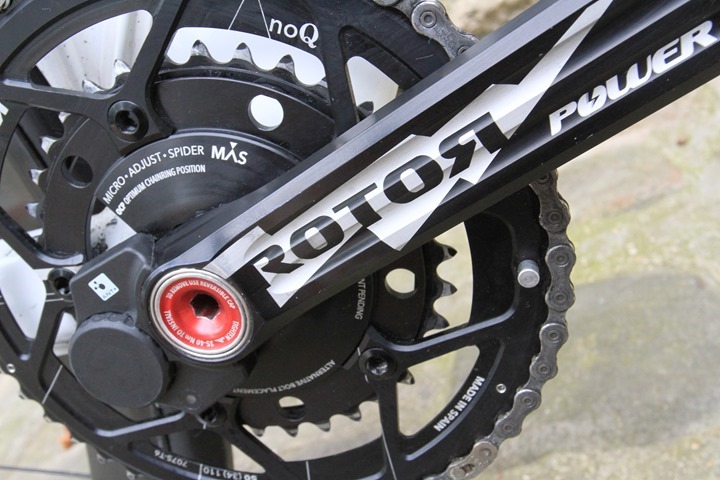
ROTOR has been in the power meter market for more than four years now, and has iterated through four different products in that time. The first unit is/was designed to measure both left and right power separately at the end of the crank arms. However despite my trying it quite a bit, I never got the system to accurately display power for me. They then shipped a left-only unit, the LT lineup, which ostensibly sidestepped the accuracy issues since being left-only sorta negates some elements of accuracy. I didn’t test that since it was merely just one half of the system I already tested. Next came the INpower system, which was initially left only within the bottom bracket. Finally, this past spring they introduced the 2INPower system, which makes a dual left/right system.
I have not tested the new 2INPower system, however, a box was left this morning from Spain for me with it in it. I’m optimistic this will work out well. In talking with ROTOR about it at Interbike; they ditched the company that provided the technology for the initial LT/dual setup that I had previously tested and have since moved to a different technology provider for the INPower/2INPower setup.
Advantages: Compatibility with ROTOR cranks and elliptical chainrings (most power meters don’t do this accurately). Ability to track additional stroke/balance metrics through their software platform.
Disadvantages: Limited compatibility with crank sets. Note, the older ROTOR sets do NOT do Bluetooth Smart, but 2INPower does.
Would I buy it: We’ll see. I’ll reserve judgment until I have units in my hands and at least a few weeks of testing under my belt. But like I said above, I’m optimistic they’re on the right track.
Relevant Posts: ROTOR announces new INpower power meters, starting at $779US, First look at new ROTOR Power Meter, Eurobike Power Meter Update Post: Quarq, ROTOR, Pioneer, Brim Brothers & Ciclosport
LIMITS Power:
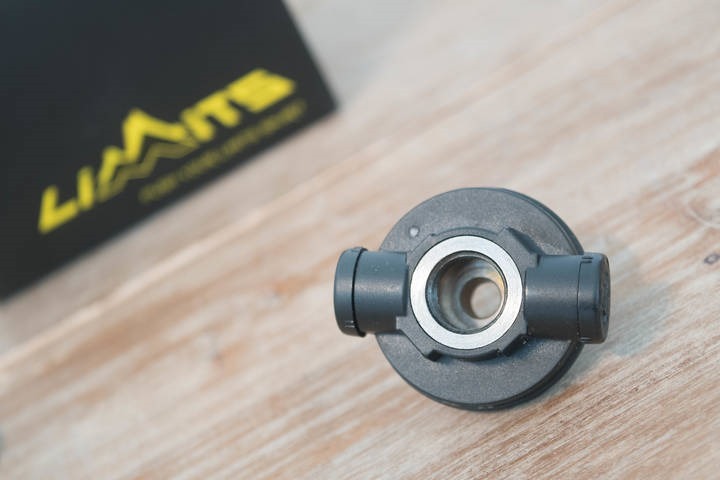
LIMITS came onto the scene during the spring of 2015, as part of an Indiegogo campaign that planned to ship by the end of 2015. That didn’t happen. However, they did recently start shipping initial units over the last 3-4 weeks. The unit sits in between your pedals and your crank arm, offering near unlimited compatibility. It’s priced at sub-$300.
I’ve historically been very skeptical of their product, timelines, and company. Like, the most skeptical I’ve ever been of a product.
Earlier this summer (2016) I received a production unit from a backer who attended their launch event, which I published a detailed comparative about here. In short, it failed. The company then went back and worked on some further firmware updates and minor hardware changes, which aim to fix those issues. Those firmware updates are within the latest units shipped out over the past few weeks, which some DCR readers have received. However, I’ve yet to see any data results that look positive. I’ll be doing more detailed tests in the coming weeks, but at this point it doesn’t look positive.
Advantages: Compatible with virtually any pedal type, crank arm, or wheel set. Inexpensive.
Disadvantages: Doesn’t appear to be accurate, battery caps easily break off, questionable customer service. Some people are concerned with q-factor changes (basically increase in distance between your two pedals), though, most don’t realize your q-factor changes anyway between a mountain bike and road bike for example.
Would I buy it: No, not at this point. If they can address accuracy issues, that’s different.
Relevant Posts: LIMITS Power Meter Accuracy Data
RPM2 Footpod Power Meter
The RPM2 power meter is essentially a footpod (insole) that you put in your cycling shoe to measure power. The company started in the medical space, and then branched out into the cycling and running realm. Initially they only supported their own app for recording of power (which was a non-starter), however they’ve since branched to ANT+ compatibility as well.
Beyond that, there’s so little information available on the units by anyone that it’s somewhat hard to take seriously (even their own website is virtually absent information about cycling use).
I haven’t spent any time with this unit unfortunately however. We initially talked this past spring or so, and I did all the measurements, but that in turn caused some confusion on their side (even when I did photos of my foot measurements). We haven’t reconnected since then about getting a review unit in. It’s on my to-do list.
Advantages: Not bike dependent being insole based; can move easily from bike to bike simply inside your shoes.
Disadvantages: Resale value is effectively zero, being it’s sized to each of your feet individually.
Would I buy it: I don’t have enough information at this time, but it does seem overpriced.
Unreleased Products:
Next, we’ve got power meters that are currently in a pending shipping state. This means that as a regular consumer as of the date of this publishing you can’t actually get your hands on one quite yet (though, some do offer pre-order options). Nonetheless, since I’ve been fortunate enough to actually ride most of these, I can offer a bit of perspective on them. Of course, until they do release a final product things could change. Ones that look promising could flop, and others that have challenges could be superstars. We just don’t know.
What we do know however is that nobody in the power meter market has actually hit their projected timelines for initial release of new products (I’m not counting minor variants). Seriously, nobody. Not SRM (new rechargeable model for years now), not Garmin (Vector), nor Polar (Bluetooth edition). Despite what the interwebs would tell you – it’s rather difficult getting a mass produced accurate power meter, regardless of whether you’re a company with hundreds of millions in revenue (Garmin), or a startup (WatTeam). Remember that it’s easy getting 95% there in power meter development, it’s the last 5% that can take years (and often does).
Nonetheless, here’s what’s in the pipeline. I’ve roughly ordered them based on a combination of when the company says they’ll ship with when I think they’ll ship.
WatTeam PowerBeat:
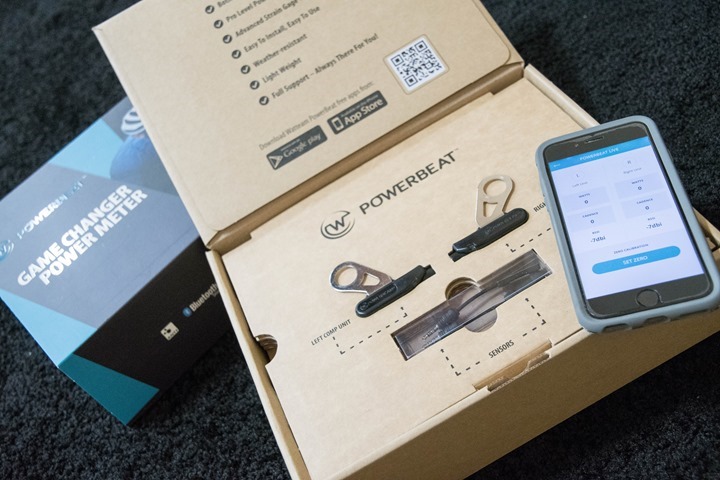
WatTeam broke onto the market a couple of summers ago (2014) with the announcement of a $499 left/right power meter system. The sensors attach individually to your left/right crank arms, and then have separate communication pods somewhat similar to Garmin Vector. The system is planned to work on both carbon and aluminum cranks, and is a bit less dependent on the flat surface of the back of the crank arm like 4iiii Precision.
They started shipping this past spring, but then had to pause and recall units due to accuracy issues noted by myself and others. I talked to them just last week, and posted yesterday about their current state, which aims to start shipping again by the end of the year. They hope to have an updated unit in my hands in the November timeframe, which would allow me better gauge whether the accuracy issues have been solved. If so – it’ll be a major step forward for consumers and dual-capable power meters at a much lower price point.
Related Posts: A Fall 2016 Update from WatTeam and their $499 PowerBeat, A WatTeam PowerBeat Spring 2016 Power Meter Update, A Preview: A Week Riding the Watteam PowerBeat $499 Power Meter, A chat with the CEO of Watteam and their new $499 power meter: PowerBeat, Watteam’s PowerBeat: A first look at prototype/beta power data
Team Zwatt:
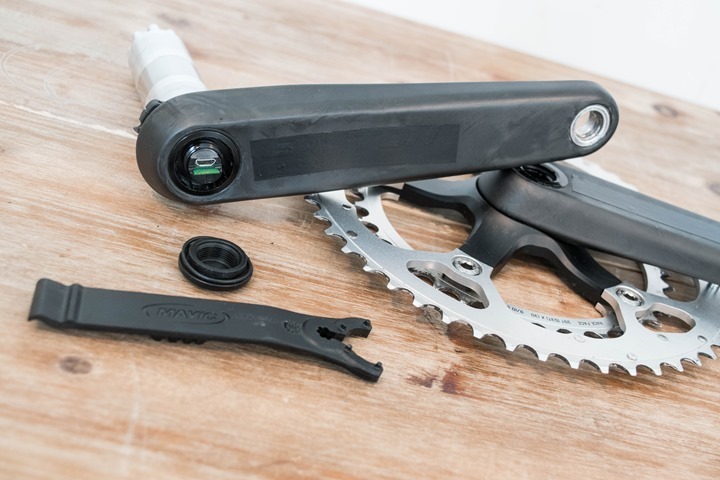
Team Zwatt hit the interwebs about two months ago as part of their crowd funded launch. The company had previously been working as an OEM for another crank arm maker, working on a power meter for them. When that crank arm maker continued to delay their market introduction, Team Zwatt decided to make their own unit.
I tested a unit as part of my post, which you can read below. Overall despite being beta, it handled well. But the units aren’t shipping today – and so I’d wait until they start shipping. Getting from beta to shipping a mass-market consumer product is always really tricky, especially for a small company.
Related Posts: Hands-on: Team Zwatt launches subscription based power meter
Shimano Dura-Ace Power Meter:
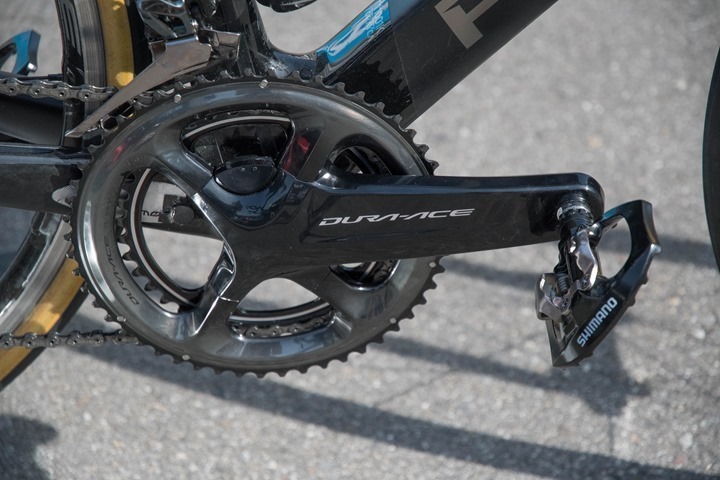
As a surprise to nobody, Shimano jumped into the power meter market this past summer, announcing a new Dura-Ace integrated option that enables you to get complete left/right power. While they didn’t have beta units at the launch, they did have some on-hand at Eurobike a month ago.
At present it doesn’t sound like this will start shipping till around April 2017, so we’re talking quite some time until we get to ride production units and judge things like accuracy. All of which ignores price (which isn’t that great comparatively) as well as the fact that it only transmits power on ANT+ (it does support Bluetooth Smart for configuration however).
Related Posts: Eurobike 2016 Power Meter Round-up: Shimano, First Look: Shimano Dura-Ace R9100–Now with power meter option
Brim Brothers Zone:
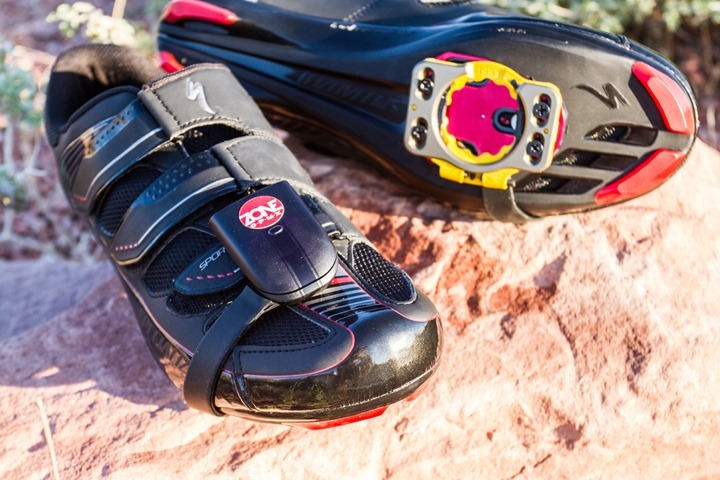
Update: As of October 23rd, 2016 – Brim Brothers has ceased operations.
Next up is Brim Brothers Zone, which I’ve previewed for years now. They launched this past spring on Kickstarter with hopes of shipping prior to summer. The latest update has them shipping soonish. The Zone system is cleat-based, and attaches to the base of your Speedplay compatible cycling shoes. This means that you can quickly move from bike to bike, as long as it’s Speedplay equipped and is compatible with the specific Speedplay versions that Brim Brothers supported (and is also a three-hole shoe). This is ideal for those with numerous bikes, or who travel and can control the pedal type.
I’m not sure what to say here. I’m putting this in the camp of – when it ships, I’ll be happy to test it and will celebrate that they’ve done so. But until then, I’d hold off.
Related Posts: Brim Brothers announces Zone power meter production, my first ride impressions
Xpedo Thrust E:
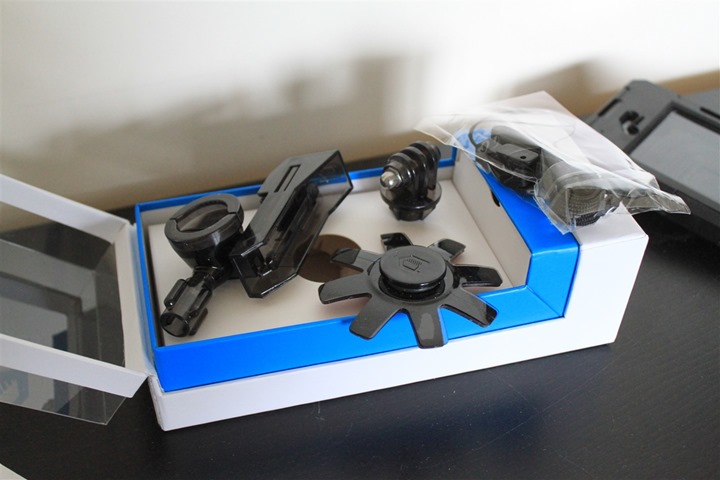
Next we have the perennial party crasher at bike events worldwide, the Xpedo Thrust E. This pedal based unit has been continually shown for a number of years as ‘almost ready’, typically just ‘2-3 months away’. Astoundingly, last year (2015) they actually said March 2016 – as opposed to the usual 3 months away.
I checked on them again this year at Interbike 2016, and they said…“Maybe March 2017”.
Either way, there were a lot of “maybe’s” said within their discussion. Simply put – I doubt we’ll ever see it ship at this point.
Luck Shoe Power:
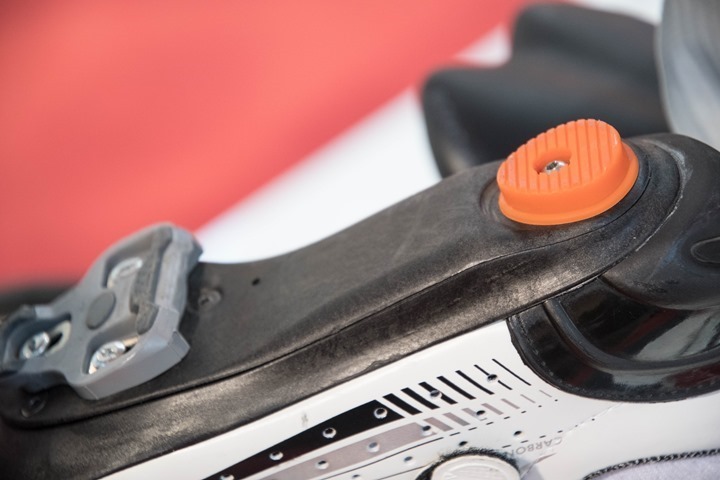
This Spanish company is making a power meter cycling shoe. Well technically it’s a bit of a shim that slides under their cycling shoes, but either way – it measures and transmits your power. I got a chance to check it out at Eurobike last month, and got a better handle on where it sits. I think they’re basically further away than they say they are. They’re aiming for around the New Year, but in reality I’d bet fall 2017. Still, if they can achieve accuracy for the prices they’re talking – that’d be awesome.
Relevant posts: A Look at Luck’s Cycling Shoe Power Meter
Ashton Instruments
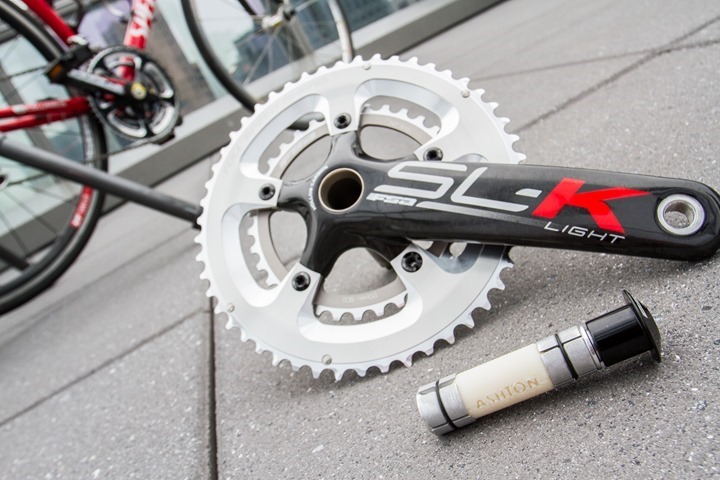
(There has been no change in this product or communications to me since last Interbike 2015, I’m leaving the text basically as-is from 2015.)
Ashton Instruments made the media rounds at Interbike two years ago (2014), and then I visited with them again during the spring of 2015 where they demonstrated their bottom bracket based system, which they hoped to sell for under $500 in the spring of 2016 (earlier this year). These former MIT students have the foundation for a potential power meter company and product, and were able to demonstrate it to me both indoors and outdoors. They also have riders on one of the local teams testing out basic prototypes of the platform. Note that the solution will be limited to measuring left-only power.
Ultimately while they’ll no doubt be a player to watch in the future, I certainly wouldn’t make any purchasing decisions today or for the foreseeable future based on their product. It’s simply too far out and with far too many unknowns.
Dyno Velo:
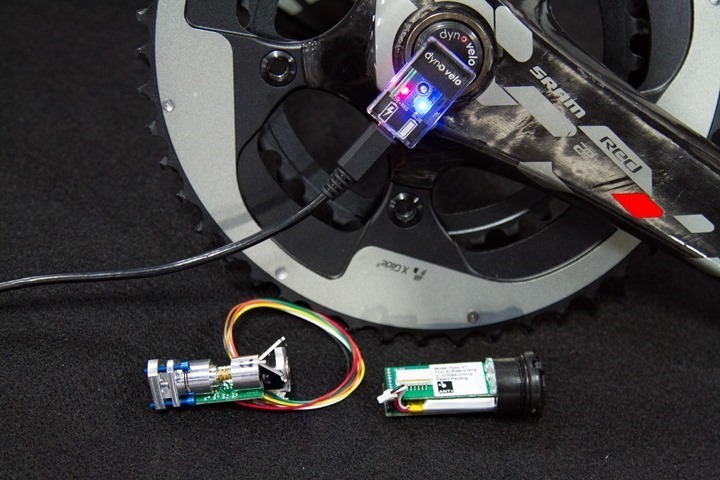
(There has been no change in this product or communications to me since last Interbike, I’m leaving the text basically as-is from 2015.)
I visited these folks at Interbike 2015. They’ve got a bottom-bracket region power meter, very similar to what Ashton Instruments is doing. As I noted in the post, I think they have the potential to have a solid product if they can make it a bit more consumer/bike shop friendly. Their pricing will likely be in the same ballpark as the Ashton Instruments option (and targeting the same customers).
At that time they wanted to ship in early 2016, but I thought they’d need to make some minor tweaks to their designs in order to achieve that. Still, nothing major since then. I get the feeling they thought my post last year was the end of them (ok, maybe not ‘got the feeling’, they said exactly that).
Non-DFPM Devices:
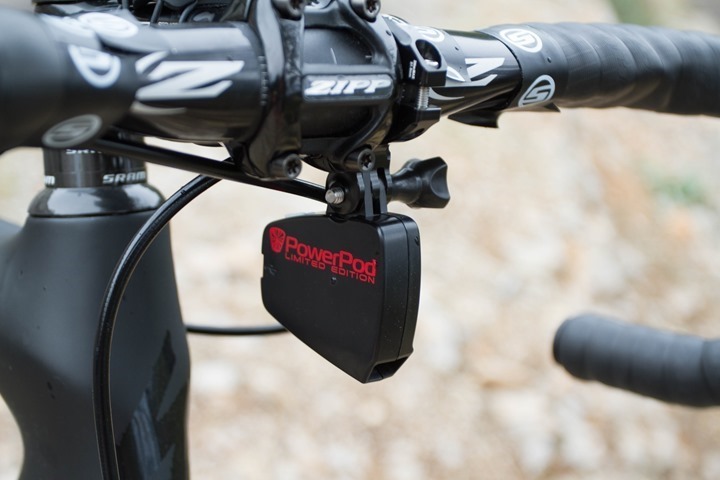
Finally, we have a few options that use calculations to determine your power output. These units don’t actually measure your work effort using strain gauges, but instead rely upon other environmental factors. Thus the name of non-Direct Force Power Meters (DFPM). Some take offense to these being called ‘power meters’ since they lack a strain gauge, but frankly that’s stupid. There’s no international definition that states how a power meter shall measure power, but rather just that it measures it in some way. These units come to a measurement via different methods than direct force measuring strain gauges. I don’t care whether they use strain gauges or small chipmunks, as long as it ends up accurate. Inversely, if it’s inaccurate, then it’s useless – even when using a strain gauge.
Historically (in all the years I’ve been doing this), I’ve kept these as a separate category – in large part because they were indeed so different in terms of not just product design, but also accuracy. However, I do want to highlight the PowerPod as being one that for the right consumer I would recommend.
PowerPod: This was launched just over a year ago at Interbike 2015, and then started shipping about 60 days later. The concept is built upon the iBike technology of using aerodynamics for power. In my in-depth product review, I found it did very well against a suite of power meters in a wide variety of conditions. For a $299 power meter, it does quite well. There are specific edge cases where it might not handle as well, but if you understand whether or not you fall into those edge cases – then you can make the right decision. I do think the unit is on the edge of pricing though, in that at $399 from 4iiii you get a direct force power meter that reduces those edge case (albeit left-only). Whereas I think a $249 price point is far more wide-reaching. My In-Depth review can be found here, as well as the boatloads of people in the comments who are largely quite happy with the device. Finally note that the company says they’re about two weeks away from shipping their dual ANT+/BLE version.
PowerCal: The PowerTap PowerCal (offered in both ANT+ and Bluetooth Smart) is a heart-rate strap that also transmits power information. It monitors your heart rate and then uses the rate of change to determine power. While many hard-core power meter users are afraid to even glance at the thing, I found that when you started looking at real-world data, it wasn’t actually all that bad. And in fact, it was far more accurate than you’d expect. In general, I’d recommend this for someone that may be buying a heart rate strap anyway and is interested in power (since you’re basically just spending $50 more, it’s about $99 these days). While there are some apps out there that can attempt to do the same thing, none of them re-transmit back over ANT+, so the data isn’t included on your bike computer. Check out the full review above for the limitations on where it works well, and where it’s not so hot.
iBike: I haven’t tested out the iBike in a few years now, however, this is effectively a head unit combined with the PowerPod noted above, which determines your power output. My challenge with the iBike has primarily been the head unit side, and not the power meter side. Compared to the head units of today, the head unit is just horribly dated. But I think the company is on the right track with the PowerPod and focusing on a solo power meter rather than the full package. So far so good there.
Buying Used Power Meters:

Everything in this post is talking about new units whereby you are the original owner. So when I talk about costs there, that’s my baseline. With that in mind, there’s nothing wrong with buying used cycling gear. However, in the case of power meters, I’d caution that accuracy is of the utmost importance. After all, if you’re buying an inaccurate/untrusted power meter, you might as well just send me the cash instead and I’ll send you back random numbers.
Thus if you buy a used power meter my only caution would be to spend the money to have the manufacturer validate/test it, this is especially true if you don’t know the source of the unit.
For example, I’d be less concerned if you had a close friend that used a PowerTap for six months and then decided to swap it out for something else due to changing their rear wheel for a disc. In that case you would know if your friend was having issues with it, and the reason behind the sale (new wheels).
Whereas, if you buy randomly from an unknown person you don’t know the history behind it and I’d be inclined to ensure a trusted 3rd party can complete a test on the device to ensure accuracy. In most cases, the best 3rd party to complete that test is the manufacturer itself.
Don’t misunderstand what I’m saying, as I’m not saying you shouldn’t buy used. I’m just saying trust…but verify.
So What Should I Buy?
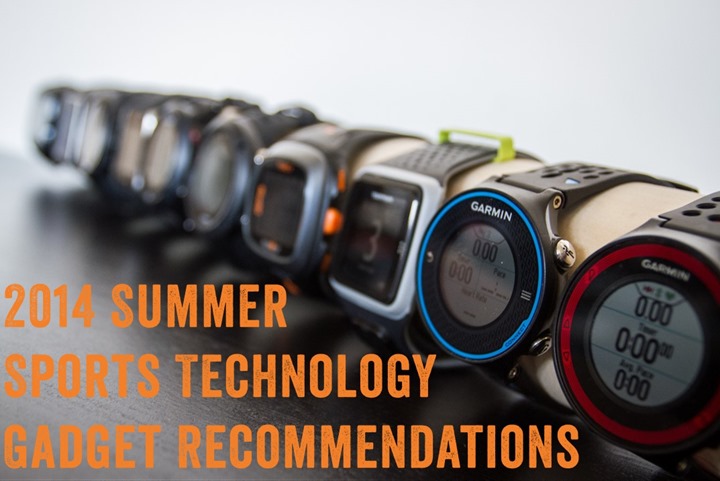
At the end of the day, there’s no single right answer to this question. There’s only ‘best’ answers for a given individual situation. I’ve tried to outline all the major pros and cons of each unit on the market, and in simple language whether or not I’d purchase it (or, purchase it again). I’d probably narrow down first where you plan to place the power meter (i.e. pedals vs crank arm vs etc…), then narrow down a brand. Placement will drive usage (i.e. changing bikes or not).
The landscape will continue to change. As I noted in the above sections, the market continues to expand, and thus you’ll continue to see new brands – and we’ll continue to see drops in prices. However, just like last year, I don’t expect to see any further price drops this year, with the first round likely not coming until early Spring 2017. There simply wasn’t any major market shifter this fall to drive spring prices. The single biggest unknown player is really WatTeam. Their $499 price point for dual-leg power would have shifted the market. But the recall last spring put those plans on ice. If they can start shipping an accurate product this November/December as planned, then that’ll heat things back up again on the price front by spring.
I wouldn’t expect anything otherwise new will hit on the market until then, and thus companies have no reason to shift prices based on speculation of other units.
Of course, if I haven’t covered something – feel free to plop questions down below. Thanks for reading!
